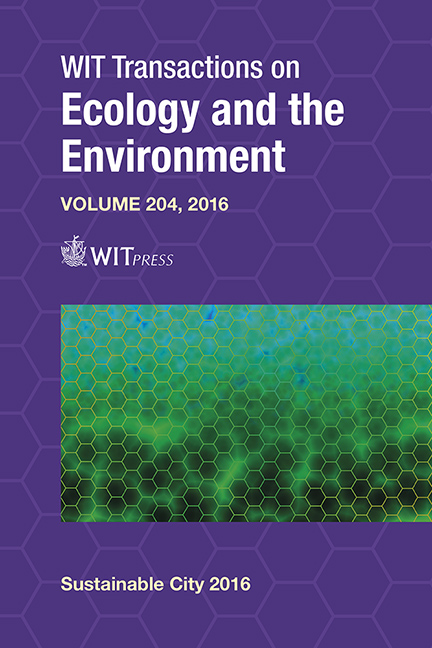Mapping An Urban Ecosystem Service: Quantifying Carbon Storage In Soils At An Island-city On A Wide Scale
Price
Free (open access)
Transaction
Volume
204
Pages
12
Page Range
405 - 416
Published
2016
Size
1,050 kb
Paper DOI
10.2495/SC160351
Copyright
WIT Press
Author(s)
R. Cerón, J. Cerón, C. Aguilar, C. Montalvo, M. Muriel, A. Córdova, C. Carballo, G. Cruz, C. Gallegos, J. Pérez
Abstract
This study examined the temporal and spatial patterns of carbon storage in an island-city by evaluation of soils across the entire urban and mangrove forests areas during dry, rainy and norths seasons of 2013–2014. The ecosystem service (mitigation of climatic change) was quantified and mapped on a wide scale in Carmen Island, Campeche, Mexico by using geo-statistics methods. Carbon sequestration rate and several important physicochemical parameters on a wide scale in the city were determined at 30 cm depth, which is the most relevant depth affected by land management practices. An evident seasonal pattern was observed for organic carbon, exhibiting its highest levels at the beginning of the dry season. In addition, a geographical distribution analysis identified mangrove and flooded sites as those zones in which carbon storage was higher, concluding that hydrogeology and dominant vegetation were the factors with a greater influence on carbon storage rate. Carbon storage rate obtained in this work (1.07 Kg C m-2 yr-1) was comparable with those obtained for isolated and forested wetlands in others regions of the world. This study is the first in the region that provides a high-resolution map of soil carbon stocks in a mixed and complex frame where an important urban zone and mangrove forest co-exist.
Keywords
mapping, Carmen Island, urban ecosystem, carbon storage, Mexico





